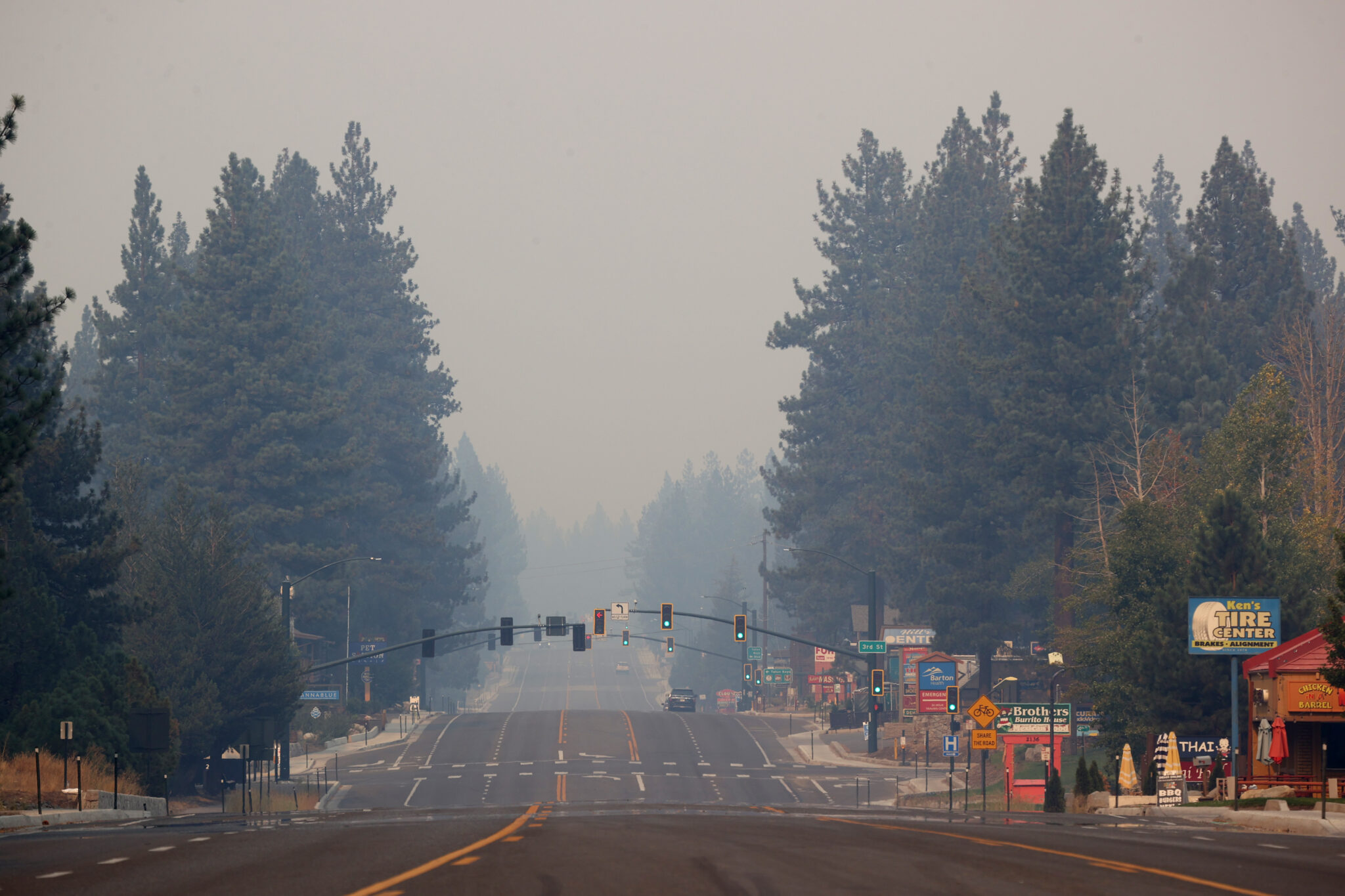Sign up to receive our weekly newsletter.
Hurricane Ida has left more than a million people in Louisiana without running water, electricity, or air conditioning amid a heat index topping 100 degrees Fahrenheit. The Caldor fire destroyed hundreds of houses and forced mass evacuations around Lake Tahoe in California. Abroad, vast swaths of Siberia were ablaze while drought-parched Madagascar suffered what a United Nations official called the first famine caused entirely by climate change.
Painstaking scientific research has established that the climate crisis fuels these kinds of extreme weather. In other words, people can now watch the emergency unfold in real time on their TV and cell phone screens.
The problem is that most viewers won’t make that connection because most stories don’t contain the words “climate change.” Six of the biggest commercial TV networks in the US—ABC, CBS, CNN, Fox, NBC, and MSNBC—ran 774 stories about Ida from 27 to 30 August, an analysis by the watchdog group Media Matters found. Only 34 of those stories, barely 4 percent, mentioned climate change.
Some exemplary stories illustrated how simple it is to make the connection. On NPR, for example, the reporter Rebecca Hersher said that “climate change is basically super-charging this storm … As the Earth gets hotter because of climate change, the water on the surface of the ocean—it also gets hotter. So there’s more energy for storms like Ida to get really big and really powerful.” And on CBS This Morning, atop a graphic reading “Massive, fast-growing storms like Ida highlight climate crisis,” the meteorologist Jeff Berardelli pointed out that a hotter planet also means “you evaporate more moisture, the ground gets drier—we’re having the worst drought in 1,200 years in the west.”
So, why did the vast majority of news coverage instead chose climate silence?
FROM US
The climate connection, made easy. Evidence of climate change is all around us, but too often climate is absent from extreme weather reporting. See our new handy guide to help set your coverage straight. Print it out for referencing, email it to colleagues, share it with everyone in your newsroom. (We promise, making the connection is WAY easier than you think!) Check it out…
PRESS BRIEFING, Countdown to COP26: What’s at Stake? It’s not too early to start orienting audiences to the all-important COP26 global climate summit this November. To get yourself up to speed, join CCNow on September 15, from 12 to 1 p.m. US Eastern Time for a discussion about the science and politics behind the conference, as well as all that’s at stake. Panelists will include Michael Oppenheimer, a climate and international affairs expert at Princeton University; Saleemul Huq, director of the International Center for Climate Change and Development in Dhaka, Bangladesh; and Isabel Cavelier, co-founder of Transforma, an sustainable development nonprofit in Colombia. Learn more and RSVP now…
ESSENTIAL CLIMATE COVERAGE
Water water everywhere. Entergy, the utility that has left New Orleans without power following Hurricane Ida, has used “deception, bullying, and political power” to continue burning fossil fuels—and has worked to delay or kill efforts that might have made the grid better prepared for a storm of this magnitude. From Earther…
Note: Journalists interested in reporting on the role of utilities in misleading the public on climate change and delaying action can learn more from the Energy and Policy Institute.
And not a drop… California is in the grips of a severe drought, leading industrial farms in the state’s Central Valley to drill ever deeper to reach groundwater. Over-extraction can lead aquifers to collapse, an irreversible condition that one well fixer in the state says he’s starting to observe. From The Atlantic…
Note: We urge journalists to cover this under-reported topic and follow up with additional, solutions-focused coverage.
“It sounded like a giant ocean wave.” Photojournalist Kent Porter has been on the frontline of California’s wildfires for 34 years and, in a personal essay, reflects on covering the ongoing Dixie Fire and the impact of it and other wildfires on communities. “Every year, I think fire season can’t get worse, and it does,” Porter writes. From Santa Rosa’s Press Democrat…
$1.38 trillion. That’s what weather disasters cost globally in the period from 2010 to 2019, compared to $175 billion, adjusted for inflation, in the 1970s, according to the United Nations. Extreme weather is also hitting the world four to five times more often than in the 1970s. From the Associated Press…
Threat multiplier. The convergence of conflict and the climate crisis is creating a harrowing new reality for at-risk populations worldwide. More than a dozen of the 25 countries most vulnerable to climate change are also affected by conflict and civil unrest, according to an index developed by the University of Notre Dame. From The New York Times…
REPUBLICATION RECOMMENDATIONS
The following stories deserve special consideration for republication by CCNow partners:
Why won’t US TV news say ‘climate change’? – The Guardian
For partner outlets: to submit stories for sharing, please use this form. Instructions for republishing and the full list of stories available for republication can be found in our Sharing Library.
ODDS & ENDS
Coverage opportunities. The International Union for Conservation of Nature’s “World Conservation Congress” takes place from September 3 to 11 in Marseille, France. Indigenous leaders from around the world will meet with French President Emmanuel Macron and various climate officials from the EU and US. Learn more here…
On September 13, Global Witness will release a new report on murders last year of people, usually representing Indigenous populations, who were defending land from mining, logging, and agribusiness. The report will also detail, through data, how multinational companies and financiers are complicit in these murders and the criminalization of activism in the Global South. For an embargoed copy of the report, email Wanda Bautista, of Burness communications…
Back to school. Teen Vogue has curated stories on topics not often taught in the US education system “to help give young people the tools they need to change the world.” This includes collections on race history in the US, worker’s rights, and climate change. From Teen Vogue…
Jobs. The New York Times is hiring a climate newsletter writer and reporter. The Boston Globe is recruiting a web producer for its climate desk. Reuters is looking for a chief energy correspondent for the Middle East. And Grist has an opening for a reporter.
Thanks for reading, and see you next time!
If you have any feedback on this newsletter, or know of information that should be included here, shoot us a note at editors@coveringclimatenow.org


